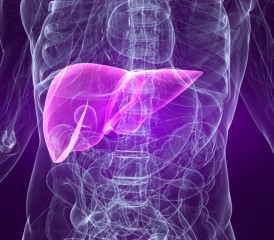Cholangiocarcinoma: The Next Asbestos-Related Disease?

More than a dozen diseases are currently associated with asbestos exposure. Some (like mesothelioma) have a confirmed connection. Others are not officially linked, but show evidence of a loose association. And because asbestos is a known carcinogen, researchers are continuously studying its relationship with various diseases.
Recently, the Department of Experimental, Diagnostic and Specialty Medicine at the University of Bologna noted an odd coincidence.
“[We observed] a high frequency of [cholangiocarcinoma] subjects with a former asbestos exposure among our inpatients,” lead researcher Giovanni Brandi told Asbestos.com.
From 2002 to 2008, they saw 258 total cases of the bile duct cancer, which affects roughly two out of every 100,000 people worldwide. The team’s medical surveys found that 24 of their patients had sustained occupational or household exposure to asbestos.
Ten of the patients lacked any other risk factors for the disease. These contributing risk factors include conditions like Hepatitis C infection, alcohol-induced cirrhosis and ulcerative colitis.
Brandi’s research team published these findings in a 2009 journal article. Since then, they’ve been working on the next step.
“We decided to conduct a case-control study,” Brandi said, “to test the hypothesis that asbestos could be a risk factor for cholangiocarcinoma.”
The results from this follow-up study appear in the February 2013 issue of Cancer Causes and Control.
The Link between Asbestos and Cholangiocarcinoma
Brandi’s team assembled a group of 155 cholangiocarcinoma patients who were treated at the Sant’Orsola-Malpighi University Hospital between 2006 and 2010. (This group was different than the cohort in their first study.) They then collected occupational histories, which they used to determine the patients’ risks of asbestos exposure.
Of the patients who reported past exposure, a significant number cited a career in construction work. Thousands of common construction materials once contained asbestos, and this occupational group has one of the highest risks for asbestos-related diseases.
After comparing the exposed group to the never-exposed group, Brandi’s team found exactly what they were expecting: an increased risk for cholangiocarcinoma among the patients with a history of exposure.
The risk was especially high for the intrahepatic subtype of the disease. In this type of the disease, the tumors develop in the ducts inside the liver. In the other type, extrahepatic cholangiocarcinoma, the tumors develop in the ducts outside of the liver.
“These findings seem biologically plausible, since fibers are more likely to remain trapped near the small intrahepatic bile ducts,” Brandi explained.
Most asbestos-related diseases are respiratory in nature. Because most fibers enter the body through inhalation, it’s easy for them to get trapped in the lungs and larynx. It takes a little more work for them to make it to the liver but Brandi believes it’s still entirely possible.
“Asbestos fibers, after inhalation can translocate to any abdominal organ. In particular, asbestos can deposit into liver tissue, due to the high permeability of the small vessels,” he said.
And once they’re lodged inside the tissue, the fibers can cause persistent inflammation.
“The carcinogenic process of cholangiocarcinoma has been linked to the presence of chronic inflammatory stimuli,” Brandi said.
And while researchers haven’t conclusively identified all of the potential inflammatory stimuli, asbestos meets the criteria. Researchers know that it causes severe inflammation once it’s trapped within the body and they believe that this inflammation is one of the first phases of development for most asbestos-related diseases.
With mesothelioma, the additional phases of development typically take several decades. Cholangiocarcinoma may have a similarly long latency period.
Just like with mesothelioma, most cholangiocarcinoma diagnoses are made in patients over the age of 65. If the cancer is indeed caused by asbestos, this would mean several decades had likely passed from their last point of exposure.
Future Directions
To further investigate the potential association between asbestos and cholangiocarcinoma, Brandi’s team developed a new research program to study the occupational and environmental causes of the cancer. Their next project will focus on the dose-response relationship between asbestos exposure and the risk of the disease.
Until a connection is confirmed (or ruled out), Brandi suggests additional health precautions for anyone with a history of asbestos exposure.
“We believe that more studies need to be conducted to properly address the issue of early diagnosis. Theoretically, sonography (ultrasound testing) could be studied as a first-line diagnostic approach in high-risk subjects.”
Asbestos-related disease specialists can also run further tests to detect the earliest signs of several associated illnesses.